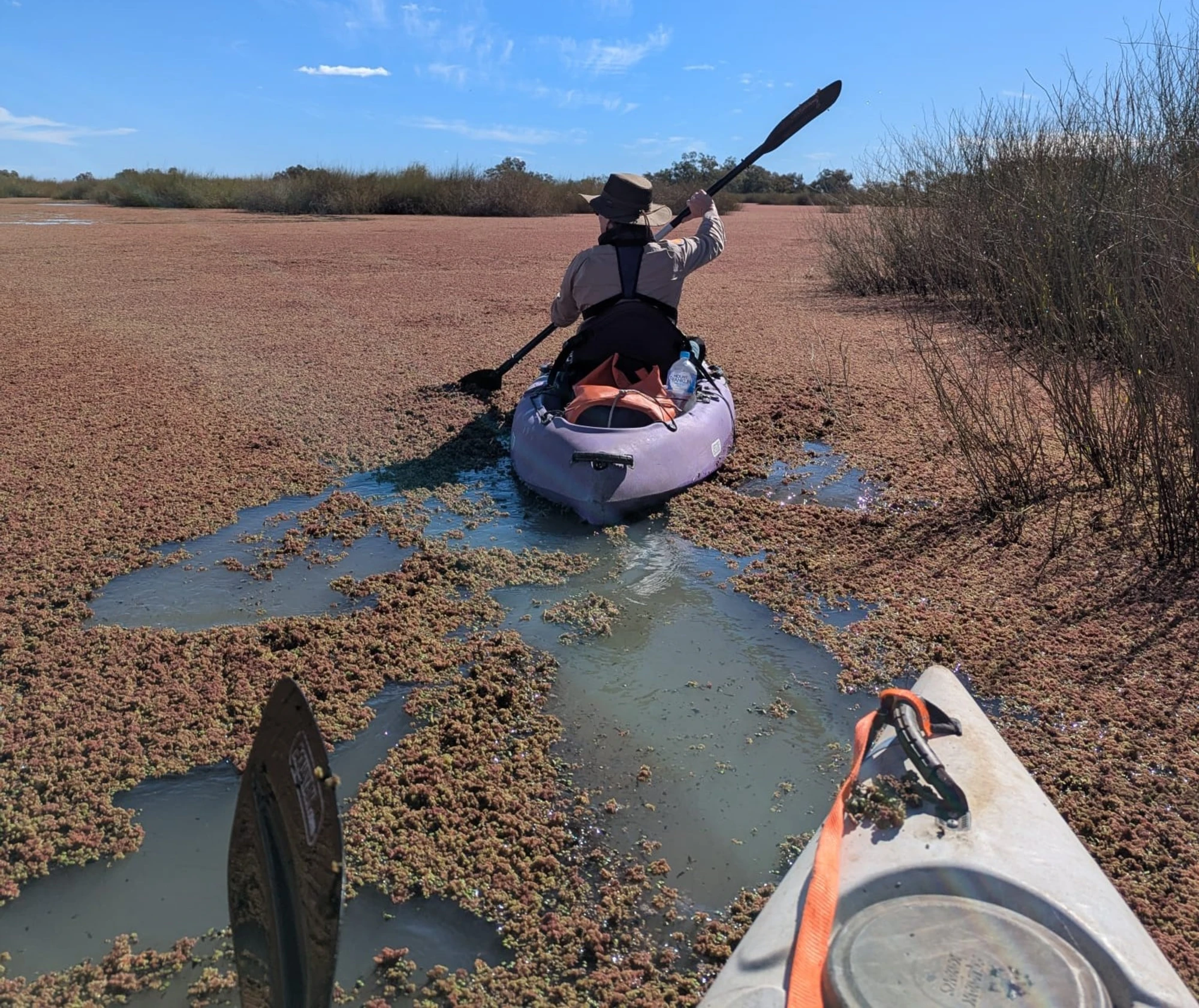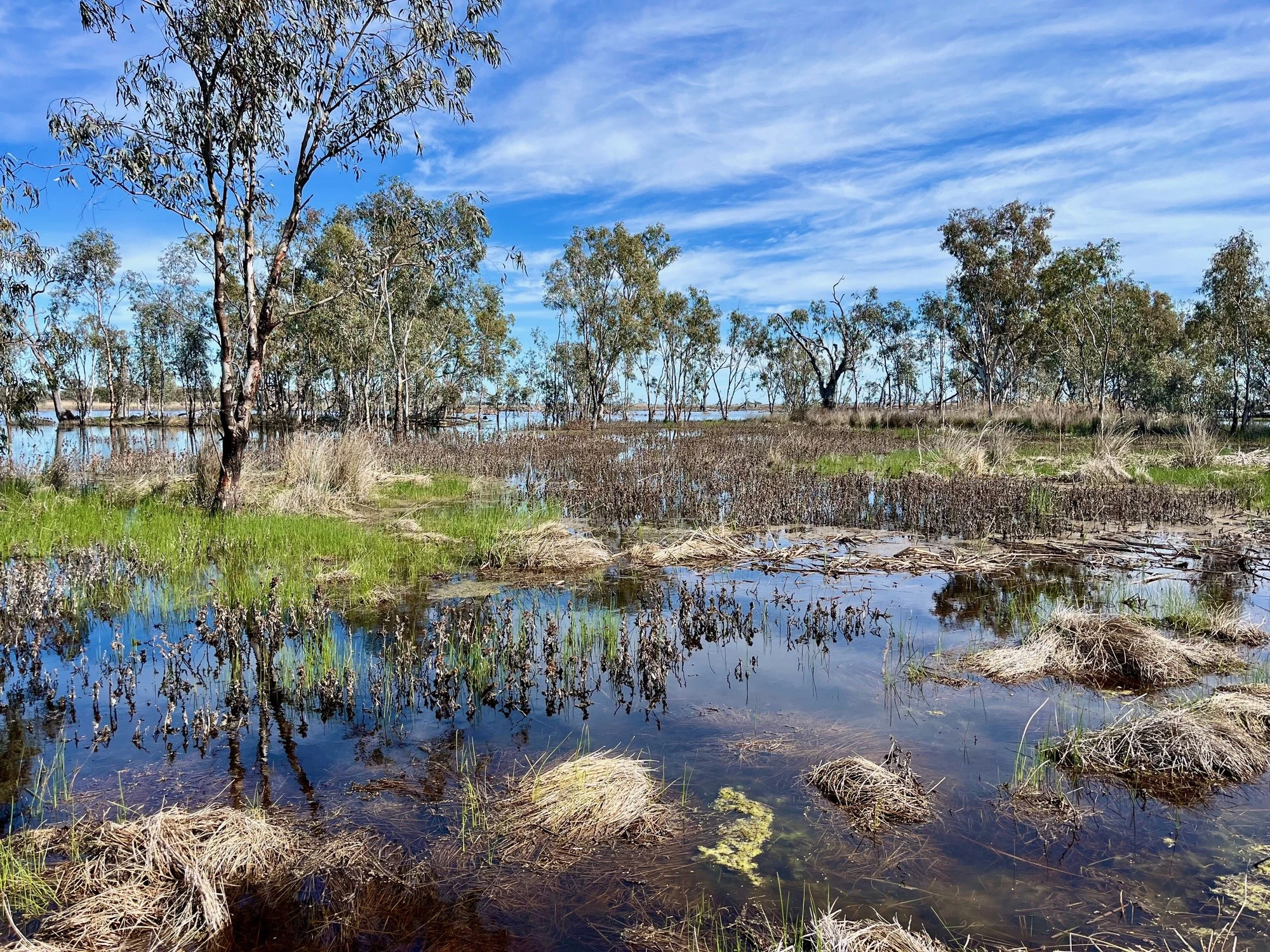Vegetation survey data for Narran Lakes Nature Reserve, spanning 20 years (2004-2024), have recently been collated by the Griffith University Native Vegetation team, led by Dr Rebekah Grieger.
During this period, over 190 plant species from at least 48 families were recorded, the majority of which are native species.

Non-woody plant cover and diversity varied considerably over time, reflecting patterns of wetting and drying. Peaks were exhibited following the recession of floodwaters and declined with drying.
The turnover of plant species was also found to be high, with very few species observed in all surveyed flood cycles (2004/06, 2008/09, 2017/18, and 2023/24).
Prior to 2023/24, the number of plant species observed across the Nature Reserve was declining. However, recent surveys after a period of wet conditions recorded more species than in all previous periods.
Some shifts in vegetation composition are also apparent over these two decades, including an increase in exotic plant cover in lakebed and open floodplain sites.
Overall, non-woody vegetation at Narran Lakes remains highly resilient to shifting conditions facilitated by large, diverse and persistent soil seed banks.
Soil seed banks are natural stores of dormant and viable seeds within the soil that can germinate in the future when conditions are favourable. Seed banks are critically important to the resilience of plant communities, especially in ephemeral wetlands. An ephemeral wetland is one that is dry for years at a time, flooding only occasionally and for relatively short periods—such as the Narran Lakes.
Long-term monitoring of plant communities and seed bank dynamics will be critical to detecting and understanding shifts in vegetation composition, structure and function.
The Griffith University team are leading the University of New South Wales’ (UNSW) Lower Balonne Flow-MER vegetation studies. The first 2024-2025 vegetation study was postponed due to poor weather conditions, which prevented access to the sites. The first vegetation survey is therefore planned for Spring 2025.
The team will study how environmental water contributes to maintaining, improving, or influencing riparian woodlands, lignum shrublands, and non-woody wetland vegetation, as well as the resilience of vegetation to fire, to inform environmental water decision-making.




.webp)
